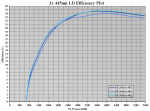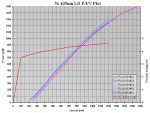- Joined
- Nov 7, 2008
- Messages
- 5,725
- Points
- 0
I can't see any reason why you shouldn't be able to get at least 1.8W.. sometimes you'll get some small losses. If you were to raise your current slightly I'd guarantee you'd see 2W..
If it were me though, I'd use that kit with a PBS on the second flex mount instead of a mirror. If you're only combining 2 diodes a PBS is far superior.
If it were me though, I'd use that kit with a PBS on the second flex mount instead of a mirror. If you're only combining 2 diodes a PBS is far superior.







